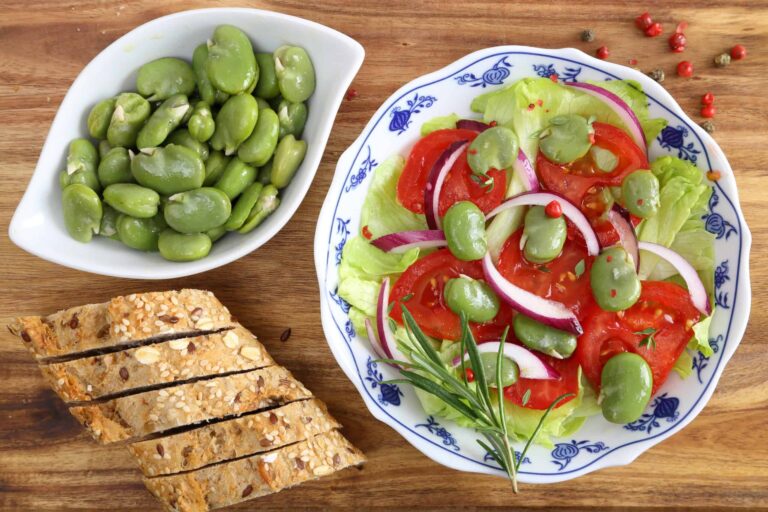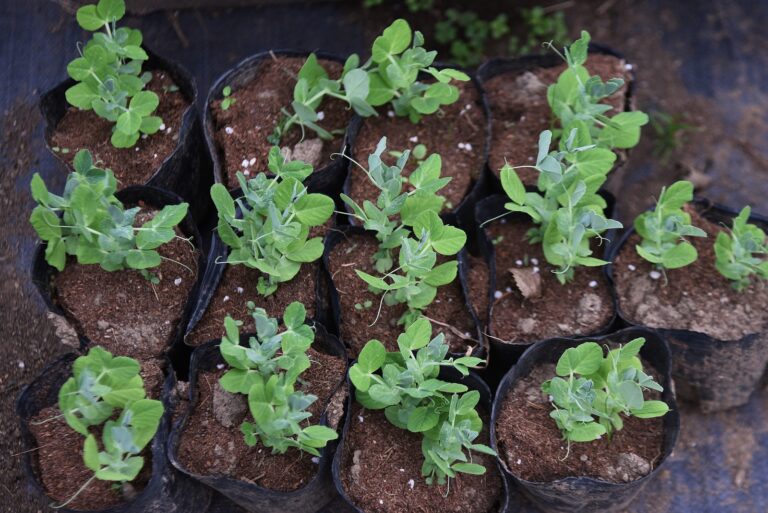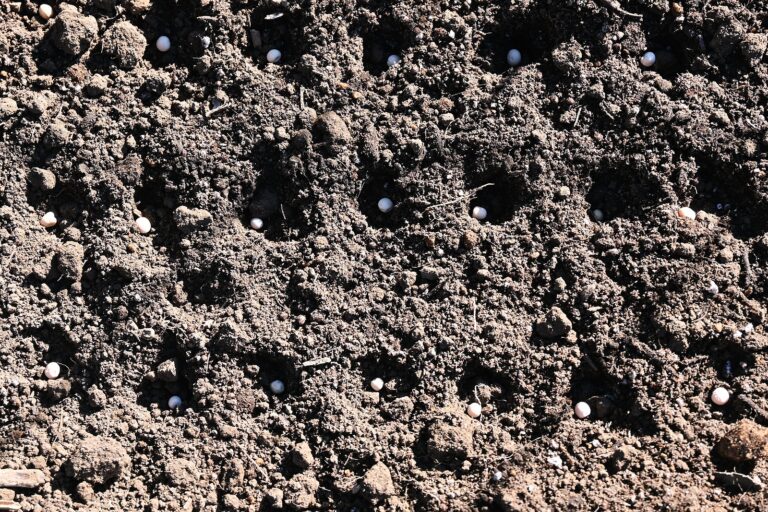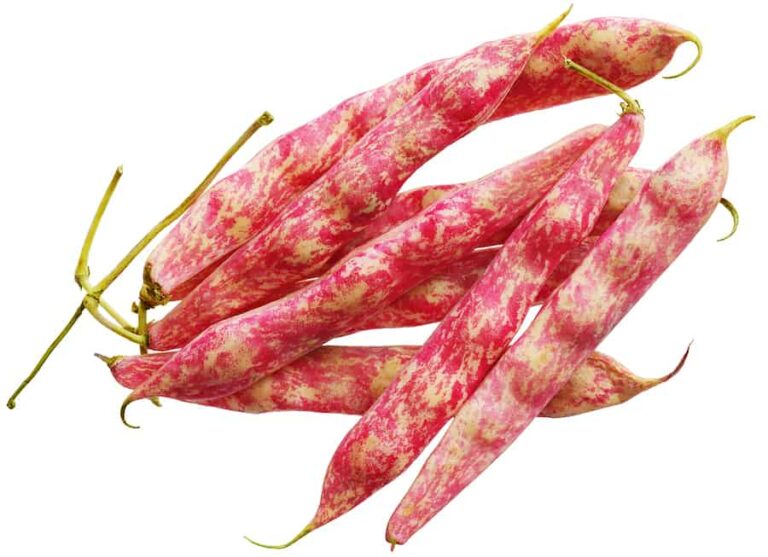How to Care for Fava Beans During the Season
Fava beans (broad beans) are hardy, cool-season plants that grow best with steady attention to soil moisture, weed control, and pest management. Once established, they are relatively low-maintenance, but consistent seasonal care ensures sturdy stems, healthy leaves, and a generous harvest of pods.
Over the years in my Sonoma Valley garden, I’ve found that small, steady efforts—watering deeply, supporting tall plants, and protecting against aphids—make a big difference in both plant health and yield. Here’s a guide to caring for fava beans from emergence to harvest.
1. Water Consistently but Avoid Overwatering
Keep soil evenly moist through the season. Water deeply once or twice a week, depending on rainfall and soil type. Avoid waterlogging—fava roots dislike soggy soil. During flowering and pod set, ensure steady moisture to prevent flower drop and small pods.
Tip: Use drip irrigation or a soaker hose to keep foliage dry and reduce disease risk.
2. Mulch to Conserve Moisture and Suppress Weeds
Apply a 2–3 inch layer of straw or leaf mulch once seedlings are 4–6 inches tall. Mulch helps regulate soil temperature, conserves moisture, and prevents weed competition.
3. Support Tall Plants
Fava beans can grow 3–4 feet tall and are prone to lodging (falling over), especially in wind or heavy rain. Use stakes or string between rows for support as plants reach 18 inches high.
4. Control Weeds Early
Weeds compete for moisture and nutrients during early growth. Hand-pull or lightly hoe around plants before mulching. Avoid deep cultivation that can disturb roots or nitrogen-fixing nodules.
5. Watch for Pests and Diseases
- Aphids: Common in warm weather—rinse off with water or apply insecticidal soap.
- Chocolate Spot (fungal disease): Improve air circulation and avoid overhead watering.
- Root Rot: Ensure good drainage and avoid planting in poorly drained soil.
Encourage beneficial insects like lady beetles and lacewings to help control aphids naturally.
6. Encourage Nitrogen Fixation
Avoid feeding fava beans with high-nitrogen fertilizers—they produce their own nitrogen through root nodules. A mid-season side-dressing of compost provides balanced nutrients for pod production.
7. Harvest Regularly
Begin harvesting when pods are full but still tender. Picking often encourages the plant to produce more pods and prevents seeds from hardening.
My Experience
In my Zone 9B garden, I sow fava beans in November and tend them through spring. I mulch deeply after seedlings emerge, stake plants by midwinter, and water once a week unless it rains. By March, the plants are covered in white-and-black flowers, and by April, full pods are ready for harvest. Consistent care during the season always leads to a rewarding, abundant crop.
Key Takeaway:
Season-long fava bean care—consistent watering, mulching, staking, and natural pest control—keeps plants healthy and productive from emergence to harvest.
🌿 Fava Bean Seasonal Care Chart
| Growth Stage | Care Task | What to Do | Why It’s Important |
|---|---|---|---|
| Seedling (Emergence to 4 inches tall) | Watering | Keep soil evenly moist, not soggy. | Promotes strong root establishment and early growth. |
| Weeding | Remove weeds by hand or with a gentle hoe. | Prevents young plants from being crowded or starved of nutrients. | |
| Mulching | Apply a thin mulch layer once seedlings are established. | Retains moisture and stabilizes soil temperature. | |
| Vegetative Growth (4–18 inches tall) | Watering | Deeply water once or twice a week. | Encourages deep roots and strong stems. |
| Mulching | Add more mulch (2–3 inches total). | Conserves moisture and prevents weeds. | |
| Staking | Add stakes or string supports between rows. | Prevents tall plants from falling over in wind or rain. | |
| Flowering | Watering | Keep soil consistently moist. | Prevents flower drop and supports pod formation. |
| Feeding | Side-dress with compost if soil is poor. | Provides phosphorus and potassium for blooms and pods. | |
| Pest Monitoring | Check for aphids; rinse or use insecticidal soap if needed. | Prevents pest buildup that can damage flowers. | |
| Pod Development | Watering | Maintain even moisture; do not let soil dry out. | Ensures full, plump pods. |
| Support | Tighten or reinforce plant supports. | Keeps heavy, pod-laden plants upright. | |
| Harvest | Harvesting | Pick pods when full but tender. | Encourages continued production. |
| Post-Harvest | Soil Care | Cut plants at soil line; leave roots in the ground. | Nitrogen-fixing roots enrich soil for next crops. |
🌱 Quick Tips
- Avoid over-fertilizing—fava beans make their own nitrogen.
- Mulch deeply to protect soil and minimize watering.
- Rotate crops yearly to maintain healthy soil.
Fava Bean Learning Hub
Start here: The Ultimate Fava Bean Growing Guide: From Seed to Harvest
Planting & Growing Basics
- Fava Bean Planting Time by Region
- How Deep and How Far Apart to Plant Fava Beans
- Fava Companion Planting Guide
- Growing Fava Beans in Containers
Soil, Water, and Feeding
- Best Soil for Fava Beans and How to Prepare It
- How to Water Fava Beans for Best Growth
- Feeding Fava Beans Naturally: Compost and Nitrogen Fixing
Care & Maintenance
- How to Care for Fava Beans During the Season
- Managing Weeds Around Fava Beans
- Supporting Fava Beans: Do They Need Staking?
Pest & Disease Management
Harvest, Storage & Preservation
- How to Tell When Fava Beans Are Ready to Harvest
- How to Dry Fava Beans for Long-Term Storage
- How to Store and Preserve Fresh Fava Beans
Varieties & Seed Saving
Cooking & Using Fava Beans
Companion & Related Crops




